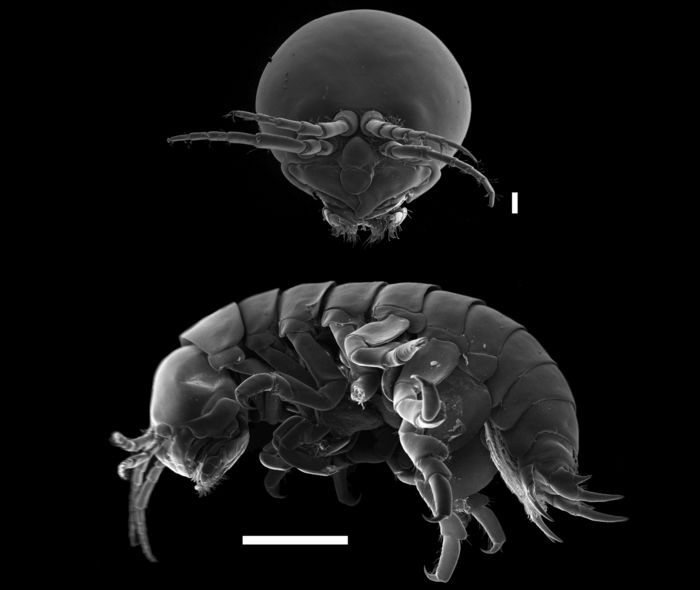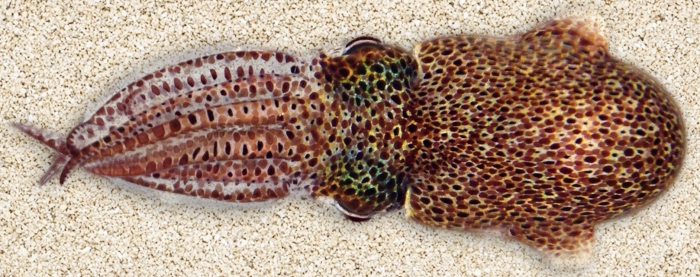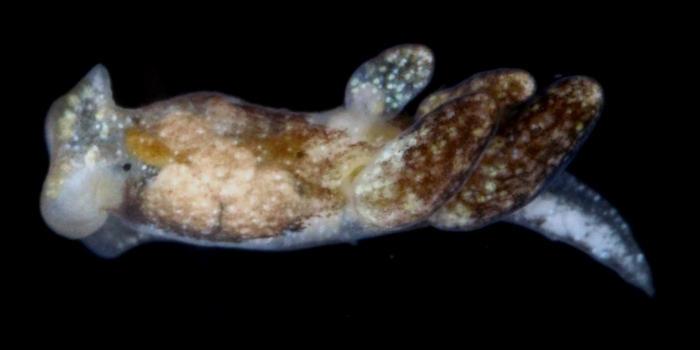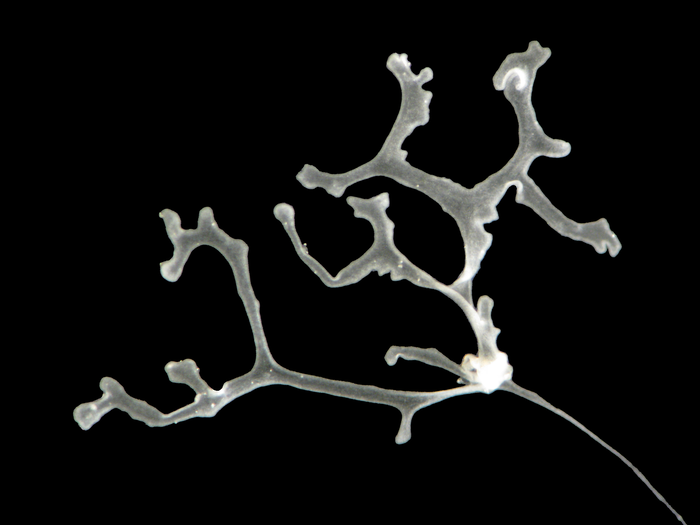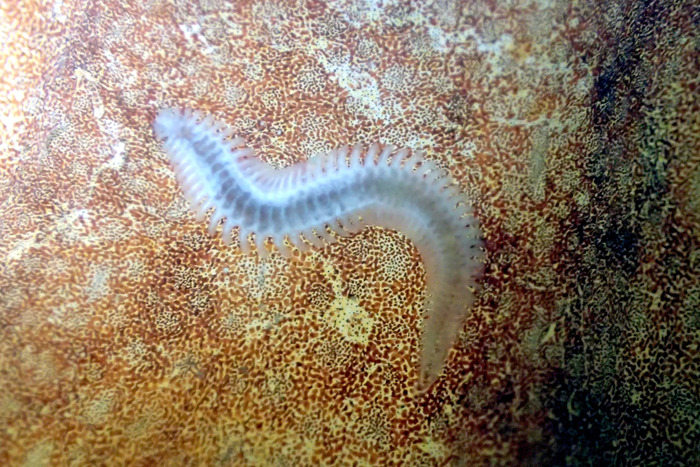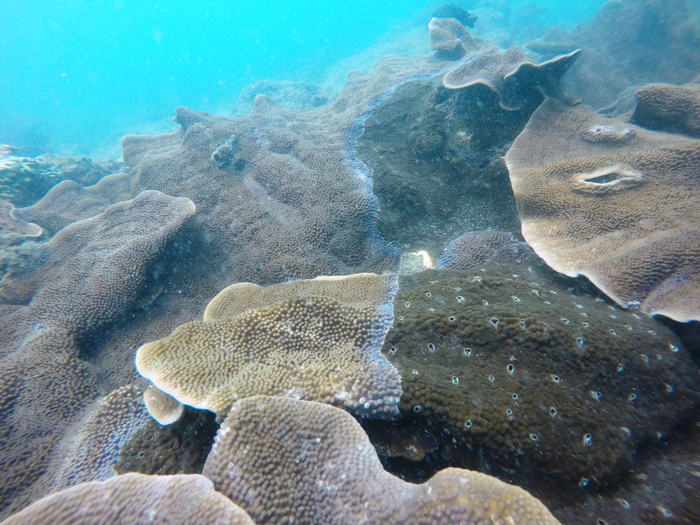From Wakanda to the Muppets, tiny squid and boring amphipods, the marine world got a whole bunch of amazing species added to its library in 2019.
Teach students in years 3, 5, 7, and 10 studying Biological Science about features and adaptations of living things using this fascinating article about the top marine species found last year.
Word Count: 1514
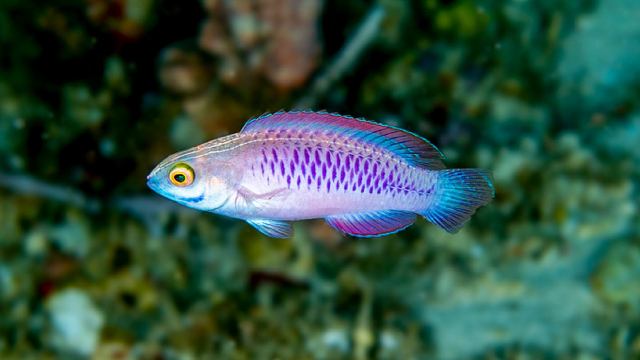
Why This Matters: Everything is better down where it’s wetter.
In a world full of listicles like 27 cats dressed up as rabbits, 12 Reasons Why Sam The Cat With Eyebrows Should Be Your New Favourite Cat, and 15 Hedgehogs With Things That Look Like Hedgehogs (all real), this is one that is much better. We hope.
Every year the wonderfully named WORMS (World Register of Marine Species) releases their top 10 new marine species discovered in the previous 12 months, and the list for 2019 has a tiny squid, a boring amphipod, and a fish channelling its inner Black Panther.
It’s a tougher job to get the list down to 10 than you think. Every year roughly 2000 new marine species are discovered. Of these, around 500 taxonomists around the world nominate their favourites. An expert WORMS panel then sift through the nominations to select the top 10.
The final selections are just a drop in the ocean of the 233,000 marine species known to live under the water. They reflect the immense diversity of animal groups in the marine environment (including fish, crustaceans, molluscs, corals, sponges, jellies, worms) and highlight some of the challenges facing the marine environment today.
So, in no particular order, here are the top 10 new marine species discovered in 2019.
The Green Rat Clingfish
Scientific name: Barryichthys algicola
There’s a lot going on here – Barryichthys is named in honour of Barry Hutchins, an Australian expert on local clingfishes. And clingfish comes from the fact the fish have an adhesive disc which they use to literally cling onto surfaces under the water “with great tenacity.”
The small clingfish (they only grow to 21mm in length) are particularly well-adapted to living on the surface of macroalgae or seagrass blades. They have narrow, long bodies with relatively narrow heads, shortened or modified fins, and have camouflage patterns of green, brown, orange or red.
What was unexpected was the discovery that there are actually two undescribed species of rat clingfish, which live in non-overlapping areas along the southern coast. To the west is the Brown Rat Clingfish B. hutchinsi (from Western Australia and South Australia), and the more eastern Green Rat Clingfish B. algicola (from New South Wales, Victoria, and Tasmania).
Thiel’s Boring Amphipod
Scientific name: Bircenna thieli
Are amphipods boring? At least this species is. This tiny Tasmanian vegetarian lives inside common bull kelp, boring new tunnels as it eats.
The whole family to which they belong (Eophliantidae) only consists of sixteen species of very small crustaceans. There are probably more species of this amphipod out there, but WORMS say they just haven’t been studied particularly well.
This species was named in honour Martin Thiel in recognition of his extensive contribution to studies of crustaceans, and for the collection of the specimens by snorkeling.
Brenner’s Bobtail Squid
Scientific name: Euprymna brenneri
Bobtail squid are relatively well known, with their rounded posterior responsible for their name. The new species chosen for the top ten is particularly cute, reaching only 22 mm in length. It’s basically the Tom Cruise of squid.
The species was discovered off Okinawa in Japan by a team from the Australian Museum. It was named after pioneering geneticist and Nobel Laureate, the late Professor Sydney Brenner.
“These creatures are lauded for their complex nervous systems and intricate behaviour – but we still know relatively little about them.” Says Mandy Reid from Australia Museum.
The ‘Star of the Sea’ Seed Shrimp
Scientific name: Maristella chicoi
Some species of ostracods, better known as seed shrimp, are capable of bioluminescence to deter predators. Others, however, use their bioluminescence to try to impress potential mates.
The new species is one of these show-offs, found in the Caribbean Sea. The ‘Maristella’ in its name means ‘star of the sea’ to represent the amazing sight of these tiny animals twinkling like little stars in the ocean.
Species can be told apart based on differences in duration, brightness and number of the light pulses, as well as the depths at which the display takes place.
Jim Henson’s Egg-Eating Slug
Scientific name: Olea hensoni
Firstly, yes it was named after Muppets creator Jim Henson. But what makes Olea unique is that, while Sacoglossan sea slugs are mostly herbivores, Olea instead feeds on the eggs of other sea slugs. And, unlike its relatives in the cold North Pacific, the new species was found in the warm waters of the Gulf of Mexico.
While taxonomists were interested in its teeth, which are less blade-like than its relatives, the real interest is the other end. Its penis is armed with a fearsome curved barb likely used in aggressive mating.
And the Henson reference – the Muppets educated generations of children while they ate their breakfast eggs. And because it’s not easy being green, the new species has also lost the green colouring of its relatives.
The Christmas-Light Brittle Star
Scientific name: Ophiopsila xmasilluminans
This new species of brittle star was recently discovered living in caves on Christmas Island, off the northern coast of Western Australia. Inside the caves, it lives in complete darkness.
The name Christmas Light comes from not only its location but also the bright flashing it makes with its legs. The flashes are likely to be a defence to deter predators.
While some brittle stars are capable of ‘losing’ an arm to save the rest of the animal, this species takes it to a new level. Not only can it lose an arm, after they’d been discarded the severed arms were seen to continue producing green flashes of light and even wriggle. As far as distractions for predators go, it’s a pretty good one.
The Mediterranean Branching Placozoan
Scientific name: Polyplacotoma mediterranea
The phylum Placozoa, also known as “plate animals”, are some of the most fascinating animals around, due to their incredible simplicity. They’ve never been observed in nature, having been discovered in 1883 living on the glass of an aquarium. Their bodies are transparent, flat and round, barely a few millimetres across, and they have the smallest amount of DNA of any animal.
But then, in 2019, an animal of very bizarre appearance was found in the Mediterranean. Anatomic and molecular studies identified it as a placozoan, even though it looked completely unlike all of its relatives.
The new species has a highly branched body – very different to the rest of the family’s uniform circular disc. It’s also a giant compared to its relatives, growing more than 10 mm.
The Octopus-Dwelling Worm
Scientific name: Spathochaeta octopodis
Deep underneath Japan’s Kumano Sea, inside a shell, and attached to a small octopus, scientists found a single specimen of a new species of polychaete worm. And while polychaete worms have been found living symbiotically with other animals before, it’s never been seen on an octopus.
The polychaete remained attached on the octopus’ body surface for three days, leading the scientists to believe the relationship between worm and octopus was symbiotic – but it’s not known if it was parasitic or beneficial for both. Since only one of the worms has ever been found, there’s still a lot to discover about the species.
Thomas’ Coral-Eroding Sponge
Scientific name: Cliona thomasi
Sponges are often overlooked, which is unfair. They play a major role in filtering water, converting dissolved matter into food for other animals, and assist in the recirculation of carbon, silicon, and nitrogen. Bioeroding sponges, like this newly discovered species, have another role – they rework calcareous hard substrates (such as corals), recycling materials and producing large amounts of fine sediments, while also creating small cavities that can be inhabited by other organisms.
It is thought that the species has significantly increased in number, a pattern that has been seen around the world. With bioerosion around the world expected to increase in the future, scientists say these sponges should be closely monitored.
The Vibranium Fairy Wrasse
Scientific name: Cirrhilabrus Wakanda
Deep below the surface of the Indian Ocean, just off the coast of Zanzibar in Tanzania, lives this tiny colourful fish. But just like mysterious Wakanda in central Africa, hidden from the world, this fish lives in the little-known and difficult to reach mesophotic reefs of Africa.
“When we thought about the secretive and isolated nature of these unexplored African reefs, we knew we had to name this new species after Wakanda,” says Yi-Kai Tea from the University of Sydney.
The Black Panther similarities don’t end there. The purple chain-link scale pattern of the new species reminded the scientists of Black Panther’s suit and the fabric motifs worn by Wakandans. And like indestructible vibranium, the purple locked in the scales of the fish turn out to be so intense that it even keeps its colourful shades even when the specimen is preserved.
“It’s a time of global crisis for coral reefs, and exploring little-known habitats and the life they support is now more important than ever,” says Luiz Rocha at the California Academy of Sciences, who worked on the discovery.
“Because they are out of sight, these deeper reefs are often left out of marine reserves, so we hope our discoveries inspire their protection.”
Login or Sign up for FREE to download a copy of the full teacher resource

